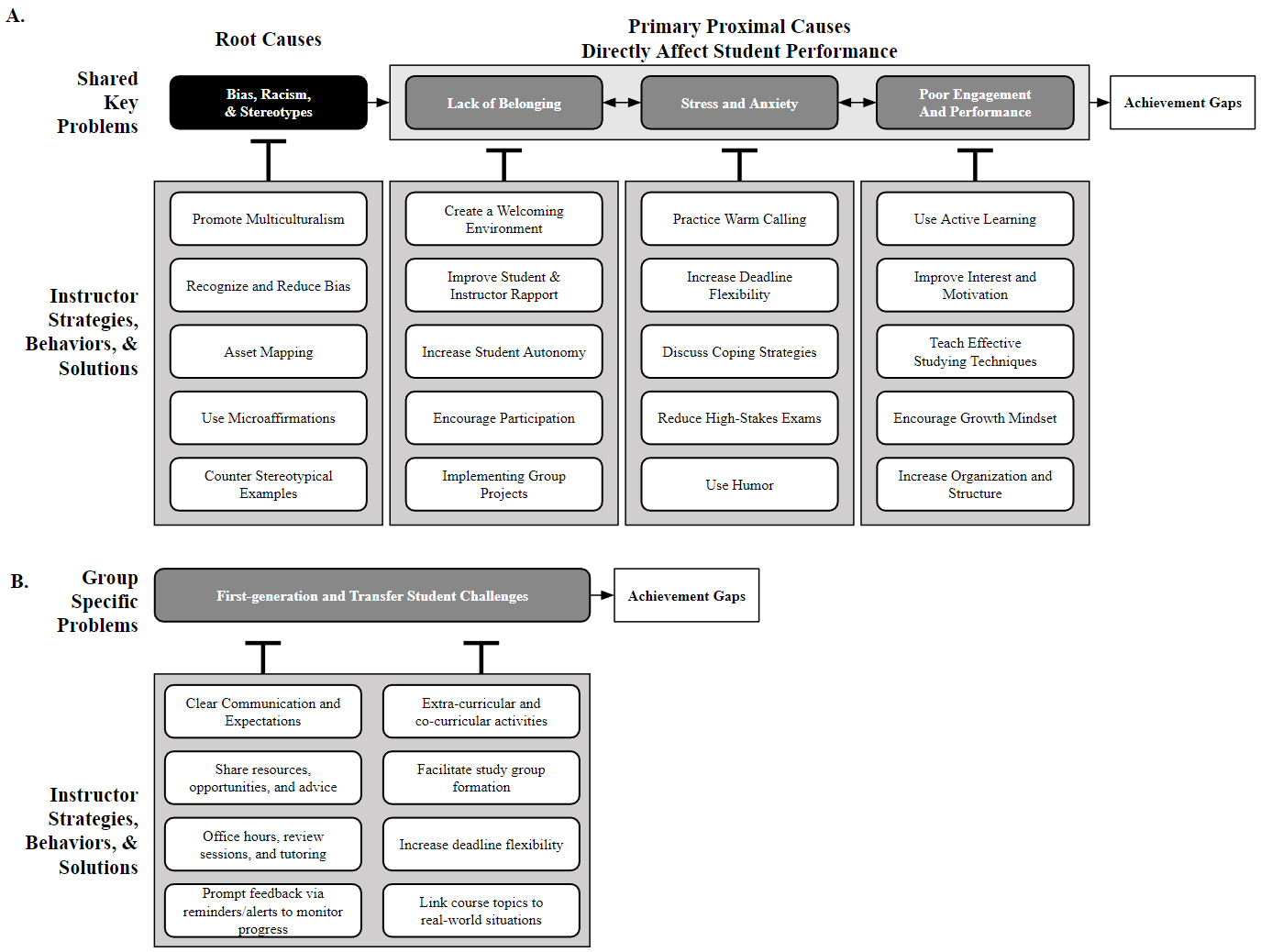Parallel Approaches to Closing the Academic Achievement Gap
Academic achievement gaps have numerous and interrelated causes. Methods to close these gaps are also numerous and interrelated. For example, a strategy that improves a student’s sense of belonging may also simultaneously reduce anxiety and improve performance. It is recommended that instructors introduce only one or two new strategies into their courses at a time. While instructors need not simultaneously use every strategy and intervention listed below in their classrooms, they are encouraged to ultimately adopt and use several of these strategies in parallel in order to have the greatest effect on closing the academic achievement gaps. While instructors need not simultaneously use every strategy and intervention listed below in their classrooms, they are encouraged to ultimately adopt and use several of these strategies in parallel in order to have the greatest effect on closing the academic achievement gaps. I have organized these strategies into four broad categories based on where they have the largest impact (Figure 2A). The first category, countering bias and racism, targets one of the root causes of the academic achievement gap. The next three categories of strategies and solutions target the proximal causes of the academic achievement gaps by 1) increasing student belonging, 2) reducing stress and anxiety, and 3) improving academic engagement and performance. While these broad strategies focus on AHN students, they are also likely to help FG and transfer students due to high intersectionality between these groups, as well as the similar challenges these groups face. That said, a separate section containing additional strategies that can help specifically FG and transfer students can be found near the end of this review (Figure 2B).

Figure 2. Summary of the Causes-of and Solutions-to the Academic Achievement Gap. A) Shared root and proximal causes of the achievement gap that affect AHN, FG, and transfer students. Solutions are shown below the problem they most directly affect. B) Details solutions that are especially important for FG and transfer students.
Significant performance differences between any two populations of students that are not based solely on merit, but are instead based on the different life experiences of those students
African Americans/Blacks, Hispanic/Latino(a), and Native Americans/Alaskan Natives.
Students whose parents do not have a degree from a 4-year college.
A student who transferred from one undergraduate institution into another.

